Sometimes the sole of your foot may get very dehydrated leaving the skin dry, rough or even cracked. This can be caused by things like warmer weather in the summer months, if you have sensitive skin or if your shoes rub against your skin. Cracked skin should be treated quickly, or the fissures can split further into the deeper skin layers causing and burning, especially on the heel.
The skin on your feet is naturally dry, unlike the skin on the rest of the body. It has no oil glands, so it relies on hundreds of thousands of sweat glands to keep our feet moisturized. This can be problematic for people who do not properly moisturize their feet on a regular basis, or who have a medical condition diabetes or athlete’s foot that causes dry skin on foot. Anyone can have dry feet, but the condition is more common among seniors and diabetics.
Dry skin on foot can range in severity from mild, temporary dry skin to severe dry skin that causes additional problems. The skin can become dry for a number of reasons, but there are ways to prevent this, such as keeping your feet moisturized and avoiding rubbing or scratching the skin. To learn more preventive measures, please scroll down.
Dry skin on Feet Symptoms
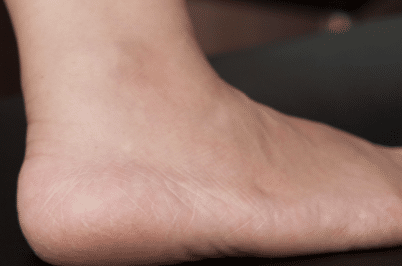
Dry skin on foot symptoms
Dry feet are generally a symptom of another incurring condition, and if you have dry feet you may experience additional symptoms such as:
- Itchiness
- Redness
- Cracks in the feet (fissures)
- Rough skin
- Flaky skin
- Peeling skin
- Rash (usually brought on by itching)
- Problem worsens in winter months.
Dry Skin on Feet Causes
Dry feet are caused by a lack of moisture in the skin. There are several common factors that can lead to dry skin on foot, including, excessively hot showers or baths, a skin condition that dries the skin, soaps that are non-moisturizing, medical conditions such as diabetes or thyroid disease, cold weather, low humidity levels in home, office, aging (we naturally lose moisture in our skin as we age), and long periods spent in the sun
Causes of Dry Skin Problem on Foot
Dry air
Dry air is probably the most common cause of dry skin on your foot, especially during the winter. It draws the moisture right out of the skin. Dry skin during winter even gets its own name, winter itch.
While cold, harsh weather don’t dry your skin, another big problem in the winter lies indoors – the dry heat churned out by the central heating. During the summer, air conditioning can come with a similar effect. To counteract the dry heat, start with a moisturizer. Turning down the heating a bit in the winter can help.
Other dry skin on foot care tips include using a humidifier in your bedroom, and bundling up – with hats, scarves and gloves, when you’re outside.
Long, hot showers and baths
Prolonged exposure to hot water can wash away the natural oils that protect your skin. If you get out of the bath or shower and your skin feels tight, it is dried out. First, choose showers over baths. But that’s not all. If you’re accustomed to waking up in the morning with a long, languid shower, limit showers to a few minutes and skip the hot water.
The water doesn’t have to be cold, but it should be lukewarm rather than hot. Try angling the shower head away from you while you shave or soap up. It’s another way of reducing the time your skin is being pounded by the water. Afterwards, pat your body dry with a towel – rather than vigorously rubbing it – and put on a moisturizer right away.
Soap
Some soaps can quickly strip away your skin’s protective oils, and we tend to use way too much of it. Often, the only parts of the body that need any soap or cleanser at all are the face, hands, feet, groin and underarms. The rest of the body can usually just be rinsed off with water.
While we were advised, always told us to wash with soap frequently, it can also lead to dry skin on foot and hands. Ironically, while done in the quest to rid ourselves of germs, excessive hand washing can dry out the skin and cause it to crack and bleed, making skin infection usual.
Many of us choose unwisely, we go for harsh soaps, such as deodorant or antibacterial soaps, that generate lots of lather and leave us feeling squeaky clean. Lathering from soap removes the oils from the surface of the skin and dries it out.
For dry skin care, look for milder, fragrance-free soaps. That’s not the same as unscented, which may still have perfumes. For many people with dry skin, the best choice is a mild skin cleanser rather than soap, experts say.
Whatever you do, don’t use any harsh soap to wash yourself. Flannels, abrasive sponges or brushes can strip away that thin layer of natural oils that keep our skin moist and healthy. Using aqueous cream as soap is often recommended too.
Itchy clothing
Dry skin on foot is especially sensitive to contact irritants, so continually exposing your skin to uncomfortable clothing such as socks could make your skin drier and itchier. Using non-biological washing powder may also help some people. Go with clothes that feel comfortable the first time you put them on. Instead of wool, try cashmere if you can afford it.
Make sure your clothing isn’t too tight either, since chafing can also cause and irritate dry skin. And remember, if your skin feels irritated, use detergents without perfumes or dyes.
Medication
A number of medicines have the side effect of drying out the skin. They include drugs for High blood pressure, like diuretics and acne and other skin conditions, like retinoids. If you notice the onset of a dry skin on foot problem after starting a medication, talk to your doctor. They may be able to help by changing the dose or switching the medication.
Medical conditions
Usually, dry skin is caused by external factors. But sometimes, it can be a sign of a something going on internally, whether it is a natural physiological change or an illness. For instance, dry skin often develops when people get older, especially in women. Changes in hormone levels can cause dry skin as we age. A number of medical conditions can result in dry skin. Some of the more common of these medical causes are:
- Skin conditions, like eczema and psoriasis – While they usually need direct treatment, careful use of moisturizers often helps.
- Diabetes – Poorly controlled blood glucose levels can lead to dehydration, and that dries the skin out. Given that diabetes can also slow healing and increase the risk of infections, it’s especially important for people with this condition to keep their skin healthy.
- Hypothyroidism – Low levels of thyroid hormone can reduce the amount of oil produced by your skin. As a result, skin becomes dry and rough. Hypothyroidism is usually accompanied by other symptoms, like fatigue and weight gain.
- Malnutrition – Not getting the essential nutrients can leave your skin dried out. One possible cause is called an eating disorder.
Other diseases, both minor and serious, can also cause dry skin on foot problems. The best way to treat these cases of dry skin depends on the underlying condition. Sometimes, getting medication for the underlying condition directly will resolve the issue.
Dry Peeling Skin on Bottom of Feet
Athlete’s foot, a common fungal infection, causes peeling, itching and stinging skin on the bottom of feet. The fungus can also spread to the toe nails, resulting in crumbling. Your chances of getting a fungal infection increase when the skin of the foot is wet for long periods of time. Men are also more likely to get athlete’s foot. Fortunately, this infection is easily treated.
Causes of athlete’s foot
This type of condition is caused by a group of fungi called dermatophytes. The infection is highly contagious and transfers through contact with an infected person. Contact with contaminated items, such as floors, towels or shoes, socks, spreads athlete’s foot that causes dry skin on foot. The fungus thrives in damp places and in humid conditions.
Avoid scratching athlete’s foot infections as it makes inflammation worse and puts you at higher risk for bacterial infection. If the toe becomes inflamed and irritated, contact your doctor for more help. He/ she can treat the secondary bacterial infection and assist with clearing up athlete’s foot.
If you have a weak immune system, you are at higher risk for developing athlete’s foot, according to researchers. Talk with your doctor about preventive measures, such as using a daily powder if you develop frequent outbreaks of athlete’s infection. This will help avoid bacteria growth.
Dry Skin on Feet Removal
Feet are subjected to abuse, from undergoing the pressure of walking to being exposed to the elements. You can remove dead skin from your feet by performing a nightly foot treatment at the comfort of your home. This at-home dry skin on foot treatment is not recommended for diabetics. Diabetics are susceptible to dangerous foot infections, and should treat dry skin and other foot conditions under medical supervision.
Step 1
Soak your feet in warm water for about 20 minutes before bedtime to soften the dead skin.
Step 2
Scrub the dead skin on your feet with a pumice stone, using gentle back-and-forth motions to remove the skin particles. A pumice stone is a porous volcanic rock you can buy in the foot care section at drugstores or beauty supply stores. If you have a lot of dead skin on your feet, you won’t be able to remove it all in one session. Hence, remove as much as you can without causing pain; repeat the process again the next day.
Step 3
Rinse the dead skins off your feet with lurk warm or cool running water.
Step 4
Rinse the dead dry skin on foot off the pumice stone under cool running water. Place the pumice stone in an open area where it can air dry. Some pumice stones have a built-in loop attached to them, so you can hang them up to dry.
Step 5
Pat your feet dry with a towel.
Step 6
Massage generous amounts of foot cream onto your feet. Rub your toe tips in a circular motion along your feet, to rub in the cream and to promote blood circulation. Purchase foot creams marketed for dry feet as these creams contain heavy moisturizers and ingredients to promote the shedding of dry skin on foot cells. Look for products recommended by the American Podiatric Medical Association.
Step 7
Put on a pair of cotton or wool socks to hold the moisture in your skin. I am sure in the morning; your skin should be smoother and more moisturized.
Skin Fissure on Feet
Many people experience dry, cracking skin on their feet, but painful or inflamed cracks may be cause concern. Deep cracks on the heel, called the heel fissures, can lead to further complications. Cracks or fissures between the toes could be a sign of athlete’s foot, which is a common foot infection. Heel fissures occur when pressure cracks apart the hard skin of the heel.
The likelihood of fissures increases if the dry skin on foot, making it more inflexible. A bacteria or fungus does not directly cause the condition, but if left untreated, an infection could develop thereafter. Skin fissures due to athlete’s foot typically result from fungal infection; though, bacterial infections and chronic skin conditions may also factor in.
Athlete’s foot spreads through contact with infected skin scales or fungi found in damp areas, such as swimming pools or locker rooms, according to the Centers for Disease Control and Prevention.
Home Remedies for Dry Feet and Cracked Heels
With every step you take, your heels remind you of the pain they are going through. After all, your feet only make you stand for whatever you want! To take proper care of feet means to give them the right nourishment through balanced diet. Lack of zinc, omega-3 fatty acids, vitamin E, calcium and iron can give you sore heels too.
It also means keeping your feet well moisturized and protected from extreme temperatures, dampness, too cold or hot air, dust and so on. Here you don’t look after your heels and there you get those ugly fissures into them. Before taking all the preventive measures though, you need to repair your cracked heels. Take help from these time tested home remedies for cracked heels.
Home Remedies to Cure dry skin on foot
Glycerin-Rosewater
Glycerin is one of the best moisturizers that one can imagine. Mixed with rosewater, it can give you smooth and soft heels without any cracks.
Oil Massage
Oils are the best natural moisturizers, not only for your dry skin on foot but also for your skin anywhere. You can either use any hydrogenated oil alone or mix them to get added benefits of their different components.
Fruit Mask
Fruits have many enzymes and other wonder components and that’s why they are so healthy! They can even make you get rid of your cracked heels. You just need to pick certain fruits like banana, pineapple, avocado, papaya etc. and mash them to massage your feet. Banana and papaya are the best options as you can mash them easily. Rub them alone or make this fruit mixture.
You can use papaya too instead of banana. In fact, if you don’t have much time or will to put so much of efforts, just mash banana or papaya and apply this to your heels. However, if you have wide fissures, you should try to make the mask with all the ingredients.
Milk-Honey Exfoliate
When you lack in taking proper care of your feet, you may get dry skin on foot. Therefore, it’s essential to follow a daily regime of cleansing and moisturizing your heels and a weekly regimen of exfoliating them. If you already have cracked heels, exfoliate them daily and moisturize them till they are cured. Here is a natural exfoliating mix made with honey and milk for you.
Herbal Neem-Tulsi
And now an Ayurvedic remedy for cracked heels which has been used since ages in India. The anti-fungal and anti-bacterial margosa leaves or neem leaves when mixed with the very skin friendly herb turmeric can do wonders to give you soft and smooth heels. This remedy is particularly good for bleeding heels.
Oatmeal-Jojoba Oil
Ingredients having moisturizing effect are a boon for your heels. Jojoba oil mixed with oatmeal is just what you need for your dry skin on foot cure.
Rice Flour Scrub
Make a natural exfoliating scrub for your cracked feet. This homemade scrub not only uses rice powder for the natural grained scrub but also the very beneficial honey and apple cider vinegar.
Wax-Mustard Oil
This is a total treatment for your dry skin on foot. If you have wide fissures that bleed often, you need to make an ointment type mixture with wax and mustard oil to be applied to your cracks on heels. Although, it uses paraffin wax, you may use the normal wax taken from a candle at your home. Use w white candle though to obtain wax pieces as colors may aggravate your problems.
Vinegar Soak
White vinegar contains acetic acid which is gentle on your feet skin and softens them up. However, do not directly apply it on your heels as the acetic acid in it may dry up the skin further. Follow the below method to use vinegar for cracked heels remedy.
Coconut oil
It is actually a salve made with some natural moisturizing agents so that your stubborn heel cracks are reduced gradually to vanish for giving you the much wanted relief. It also uses magnesium flakes (or magnesium oil) which is also a natural ingredient.
Magnesium flakes have magnesium chloride which is a type of salt sourced from sea water. Magnesium oil, although called oil, is actually water which is highly saturated with magnesium chloride. When you touch it with skin, it feels oily but as it is not oil in reality, it gets absorbed quickly into the skin making it soft and supple.
Lemon Juice
Lemon juice is not only the bleaching agent which is used for whitening skin. It can also be used for healing your cracked heels. Its acetic nature removes the dead skin cells excellently to help you get a new soft and smooth skin in place of your cracked skin at heels. There are many ways to use lemon for dry skin on foot.
Ways to use lemon juice to cure cracked heels
- Cut a lemon in two halves and take one half of it. Rub this lemon half on your feet while squeezing it so that the juice is transferred to your heels. Do this for five minutes. Now gently scrub your feet with a soft cloth or brush. Wash off with water.
- Take a lemon and squeeze out its juice into a feet soaking basin filled with warm water. Soak your feet in it for 15-20 minutes. Do it twice a week.
- Mix lemon juice with mashed papaya and apply this to your cracks on heels. Wash after 15-20 minutes.
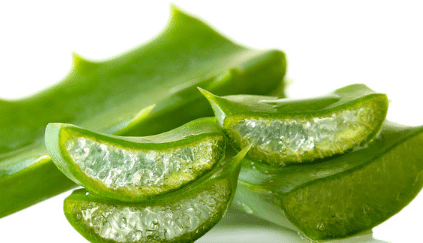
Using aloe Vera to get rid of dry skin on feet
Aloe Vera Remedy
While aloe vera is beneficial for overall health, it can also prove useful to heal your cracked feet. You need to mix certain herbs with this gel to cure your fissures and get smooth feet. This remedy is good for people with diabetes too. Diabetic foot when cracked may harbor bacteria and germs giving rise to further complications. Tulsi being antimicrobial is good for such cracks on diabetic foot. Even neem leaves can be used for dry skin on foot when suffering from diabetes.

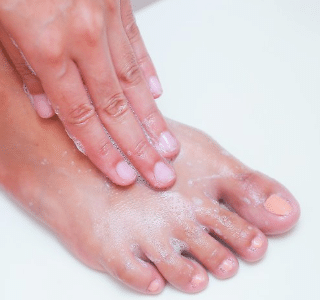
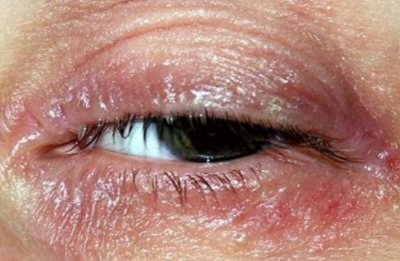
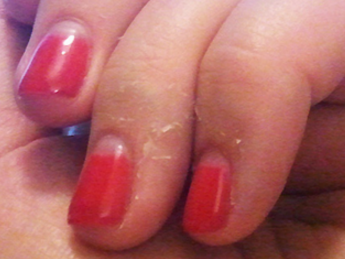
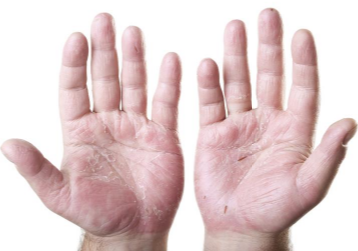










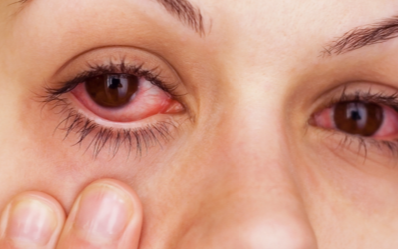

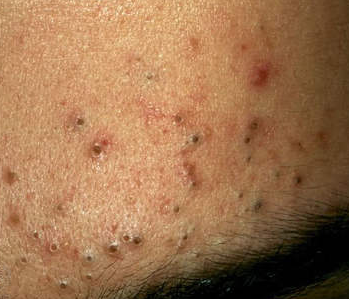
cat hat
January 9, 2020 at 11:26 pm
You have mentioned very interesting details!
ps decent website.
cat hat
January 10, 2020 at 2:32 am
Glad to be one of the visitants on this awe inspiring site :D.